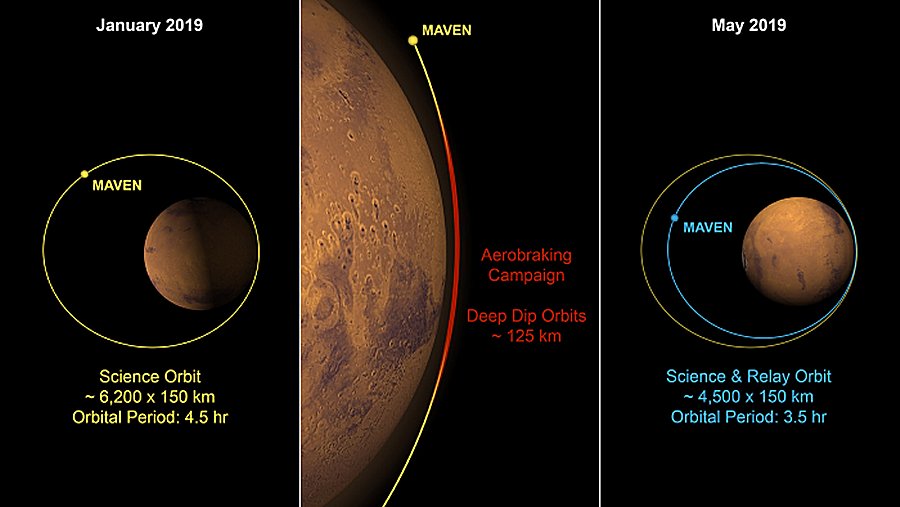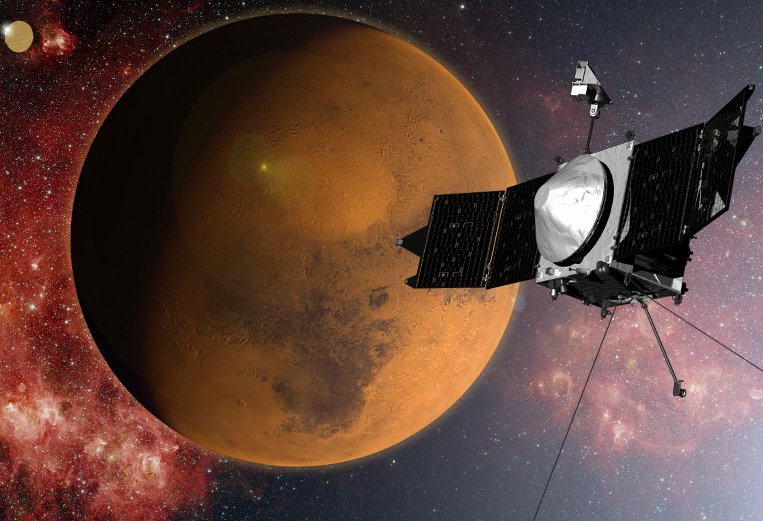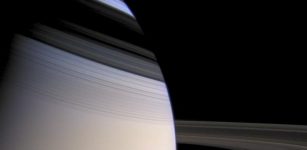NASA’s MAVEN Shrinking Its Orbit For Mars 2020 Rover
MessageToEagle.com – NASA’s 4-year-old atmosphere-sniffing Mars Atmosphere and Volatile Evolution (MAVEN) mission is embarking on a new campaign today to tighten its orbit around Mars.
The operation will reduce the highest point of the MAVEN spacecraft’s elliptical orbit from 3,850 to 2,800 miles (6,200 to 4,500 kilometers) above the surface and prepare it to take on additional responsibility as a data-relay satellite for NASA’s Mars 2020 rover.

“The MAVEN spacecraft has done a phenomenal job teaching us how Mars lost its atmosphere and providing other important scientific insights on the evolution of the Martian climate,” Jim Watzin, director of NASA’s Mars Exploration Program, said in a press release.
“Now we’re recruiting it to help NASA communicate with our forthcoming Mars rover and its successors.”
While MAVEN’s new orbit will not be drastically shorter than its present orbit, even this small change will significantly improve its communications capabilities.
“It’s like using your cell phone,” said Bruce Jakosky, MAVEN principal investigator from the University of Colorado, Boulder. “The closer you are to a cell tower, the stronger your signal.”
Coming in nearly 1,000 miles (about 1,500 kilometers) closer also will allow the MAVEN orbiter to circle Mars more frequently – 6.8 orbits per Earth day versus 5.3 previously – and thus communicate with the Mars rovers more frequently.

While not conducting relay communications, MAVEN will continue to study the structure and composition of the upper atmosphere of Mars.
The MAVEN mission was designed to last two years in space, but the spacecraft is still operating normally. With the mission managing its fuel to last through 2030, NASA plans to use MAVEN’s relay capability as long as possible.
The MAVEN orbiter carries an ultra-high-frequency radio transceiver – similar to transceivers carried on other Mars orbiters – that allows it to relay data between Earth and rovers or landers on Mars. The MAVEN spacecraft already has served occasionally as NASA’s communication liaison with the Curiosity rover.
Over the next few months, MAVEN engineers will use a navigation technique known as aerobraking – like applying the brakes on a car – to take advantage of the drag of the Red Planet’s upper atmosphere to slow the spacecraft down gradually, orbit by orbit.
The spacecraft will circle Mars at this lower altitude about 360 times over the next 2.5 months, slowing down slightly with each pass through the atmosphere.
“While it may seem like a time-consuming process, aerobraking is the most efficient way to change the spacecraft’s trajectory, said Jakosky:
“The effect is the same as if we fired our thrusters a little bit on every orbit, but this way, we use very little fuel.”
MessageToEagle.com










